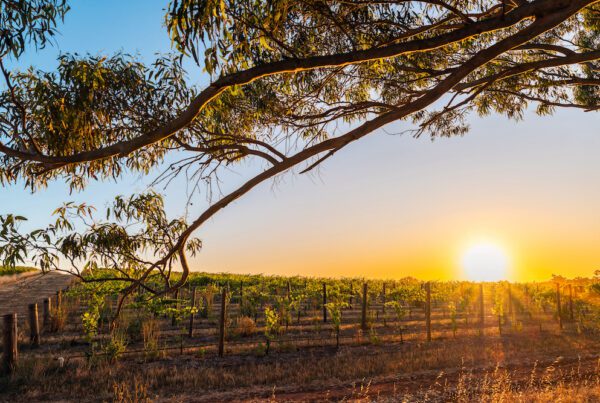
This article was first printed in WBM – Australia’s Wine Business Magazine. David LeMire MW is a contributor. To subscribe to WBM – Australia’s leading wine industry magazine – click here.
(Photograph: Christian Canute of Rusden, by Mike Smith)
Wineries can be successful in so many different ways. Financial returns, wine show awards, category dominance, export market sales, peer respect, to name just a few.
The wineries that achieve lasting success, though, tend to share most of these traits.
1. People having fun
Successful wineries have a culture that attracts good people, gets the best out of them, and keeps them. At the root of this is creating the conditions in which people can do their best work, both as individuals and in teams.
Google’s research on teams rates the most important ingredient in successful teams as being an environment in which all the team members feel comfortable contributing because they feel ‘psychological safety’. When I think about wineries in our industry that people want to work for, I also think about ones where people are having heaps of fun.
Think Julian Langworthy at Deep Woods and the #binstagram wars with Xanadu… or the culture under Iain Riggs and co at Brokenwood.
2. Packaging taken seriously
Packaging at #2! Seriously? You bet.
Do you want to impress the wine nerds or lead the category? If it’s the latter, it’s time to take packaging more seriously. As seriously as wine quality, vine health, terroir, style, you name it. And not just the label design… it’s the label stock, the glass shape and weight, the carton design, the cardboard thickness.
Are these elements being consciously selected by design, or are we sleepwalking into mediocrity? Check this out for another perspective on mediocrity – https://seths.blog/2018/11/three-kinds-of-corporate-mediocrity/
3. Place, in its place
Successful wineries understand their most important sales channels, tailor their wines, packaging and marketing to that channel or channels, and don’t worry too much about the rest.
I caught up with Opus One CEO David Pearson on his recent visit to Australia, and the talk turned to sales channels. I expected, given they are the leading winery in the leading Direct to Consumer region on the planet, they would have a high priority on DTC. Not so much.
They sell some wine through DTC, but they are focused on the wholesale trade in the USA. This is the core of their business, it’s the channel they’ve built their formidable presence through, and it’s their top priority. It’s a great lesson in sticking to the main game.
As Steven Covey said, “The main thing is to keep the main thing the main thing.”
4. Vineyards, a growth business
There’s a lot of talk about vineyard sustainability. But most of it doesn’t address financial sustainability, in the sense of the ability of the grower to keep the vines alive, keep them in the ground and keep supplying the fruit.
If a winery or wine brand doesn’t have a reliable source of grapes, which is financially sustainable, its future is at risk. One of the country’s great wine businesses, Rockford, was built on relationships with growers who gave the business loyalty, continuity and quality.
5. Pricing in Margin
Successful wine businesses focus on margin, not volume. It’s a pretty simple equation but one that people forget time after time.
Let’s make a bit more, get more scale, save money on our inputs as a result, and then it will all pay off. It sounds logical, but it’s a slippery slope to profitless prosperity, followed by overstocks, discounting, loss of brand equity and financial losses.
It’s the story of Australian wine in the UK supermarkets around 15 years ago, and it turns red wine in the warehouse into red ink on the P&L.
Related to margin, understanding pricing gives wineries a much greater chance of success.
The psychology of pricing, the understanding of how pricing works in different channels, what margins the supply chain needs and the impact that has on price in retail and in on-premise, all can make the difference between healthy, sustainable margins, and the opposite. For an in-depth look at pricing, read Priceless by William Poundstone.
The best examples… for me, it’s the Champagne houses, with pricing tailored carefully for each market, channel, and even down to individual trade customer level.
6. Aligning, a silver lining
Successful wine businesses have a clarity to their values and their identity that is strong enough that it allows management to keep things aligned.
But even with a strong identity, it is easy for things to get out of kilter. What bits am I talking about being aligned?
All the bits.
The pricing and the packaging, certainly. The intended channel with the distributor that can deliver on that. The quality and the price.
The number of markets and the ability to service them. The number of wines and the ability to promote them effectively. The desire for certain amount of direct sales and the resources to achieve it.
The social media posts with the brand values.
7. Do less, do it better
A few wineries make a number of wines that exceeds the number of cards in a pack, and do it well. However, they are the outliers, and most wineries that make more than a dozen wines, in my view, do it badly.
They might still be successful, they might be growing, they might be achieving their goals. But for most of them, they would be doing better, building more value, and creating healthier long-term success, if they focused on fewer wines, from fewer varieties.
It is always tempting to think we need to diversify, but in the process we can so easily lose our identity.
The owners of the great Bordeaux chateaux don’t sit around agonising about whether Cabernet Sauvignon is going to go out of favour, and wondering what new variety they should plant. They are too busy investing in the massive advantages they have in being so revered so they can be even more successful in 10 years.
8. Don’t be distracted by the noise
This is not solely a point about social media.
Distractions come in many forms, and there is so much pointless activity that we can be drawn into. But social media is the prime black hole of the day, sucking us into a vortex of lack of productivity, and brand message confusion.
I think the quandary about how to manage social media is most easily answered by asking the right questions.
The wrong question is this:
“What are we going to post on social media?”
The right question is this:
“What are we doing or what are we going to do that reflects our winery’s identity and values?”
Once we work out the answer to that question, the second step is to do it, and the third step is to communicate it, if it’s interesting, on platforms including social media. Four Pillars Gin is a good case study.
9. Have long term vision
Everything in the wine business takes time.
Establishing a vineyard, establishing a brand, understanding how to grow and make a given variety in a given place, reaching a critical mass of sales.
The wine business is the antithesis of a get-rich-quick industry. It has long been said that family businesses that can take a generational view are more suited to the wine business than corporates, with their need for short term profits.
That said, the advantage of a family business counts for nought if it’s not acted upon. Are we making plans, planting vineyards, and making wines that will come to fruition in 30 years, and in 60 years? Is our utilisation of capital both patient and smart?
Are we equally prepared for our children to be entirely uninterested in our wine business, as we are for them to be smitten by it?
10. (a) Logistics and operational excellence
Have you heard the saying that everything we do is marketing?
Well, logistics is where that saying rings most true for me.
Few things we do give a better impression of the care that we have for our wine businesses than in the logistics.
In sporting terms, logistics are the things that everyone can do regardless of how talented they are. Logistics is the chasing, tackling, verbal support for your team mates, body language – all those things the least talented player can do as well as the most talented. In wine business terms, it’s the responsiveness to customers, the maintenance of the website, and the timeliness of deliveries.
It’s sending the right wine to the right person at the right time.
10. (b) Wine quality
OK, this just scrapes into the list. Why only just?
Well, there are plenty of successful wineries that make mediocre wine. And plenty of unsuccessful ones that make wine of brilliant quality.
Maybe the best way to express it is to say that successful wineries tend to make excellent wine, but what sets them apart is that they realise that making excellent wine is not, on its own, going to make them successful.
So, there they are, 10 traits that I believe most successful wineries get right. They are not the sexiest things about the wine business.
They are not 100-year-old vines, or Grand Cru vineyards in Burgundy, or multi-million-dollar cellar doors. But they’re the business fundamentals that underpin our strongest wineries.
• Did you find this article beneficial? See David LeMire MW’s regular column in WBM – Australia’s Wine Business Magazine. To subscribe click here. It will be the best investment you’ll ever make.
• To subscribe to our weekly newsletter The Week That Was click here.













Recent Comments